Newaukum Creek
Newaukum Creek is one of the largest tributaries to the Green-Duwamish River. The creek flows out of the foothills around Mt. Rainier, running across pastoral acres of the Enumclaw Plateau, finally joining the Green River near the old coal town of Black Diamond. This basin supports a strong agricultural history, as well as rural homes. And it also supports chinook, coho and chum salmon as well as steelhead and resident cutthroat trout.
Mid Sound has worked on over 150 projects in this basin, in our 25 year history. These projects have included mostly working with private landowners to enhance fish habitat and water quality in the stream. But we have also partnered with governments and others to:
- Plant native trees along streams to keep water cool and clean;
- Replace blockages that keep fish from passing;
- Keep livestock out of the stream, which keeps water clean and reduces erosion;
- Install wood into the stream to provide the pools and cover that fish like.
The majority of these projects were done in partnership with the Muckleshoot Tribe, Trout Unlimited, King Conservation District, and King County.
Malatesta Farm
Many of the projects Mid Sound has been involved in were on private properties – planting native trees and shrubs along the stream banks of farms. One project on an active cattle ranch owned by Ellen Maletesta is a good example of one of the 15-20 farms that partnered with us to restore the creek.
Before the project was done, there was no shade for the stream, and cattle could graze right up to and into the stream. The landowner was encouraged to participate in the restoration because she received fencing along the length of her property, several watering sites for her cows, and a crossing. A long stretch of creek was planted to about 30 feet deep on one side (the other side being owned by a different landowner.
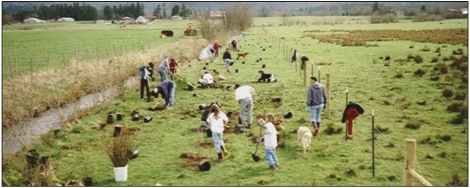
Looking upstream during a volunteer planting event from the Enumclaw area.

Another view of the same location, after – showing the extent of the growth!
North Fork Culvert Replacements
Mid Sound replaced two blocking culverts on the North Fork.
The first was the site of a 100 year old dam and culvert that created a full blockage to fish to about a mile of good-quality forested habitat. The old culvert was perched 8 feet in the air, keeping any fish from getting up.
In 1997, it was replaced with a larger culvert. To address the steep grade, a section of the stream was re-meandered and a number of full-spanning log weirs were added. The logs were placed are 20 feet apart and are a foot high. They provide a controlled grade –sort of like a fish ladder – that is much better than the 8 foot drop from before.
According to Troy Fields, one of the project managers at the time, “The amazing part of this project was that just a few short months after it was completed, Coho returned to the upstream area – a portion of the stream they had not been able to access for over 100 years –and we could see them spawning.”
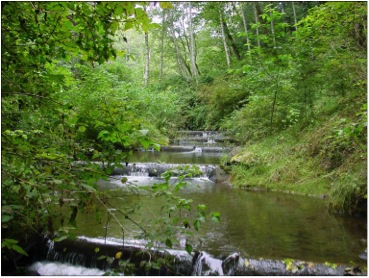
This photo – taken years after the project was completed—shows the log weirs downstream of the culvert functioning exactly as intended.
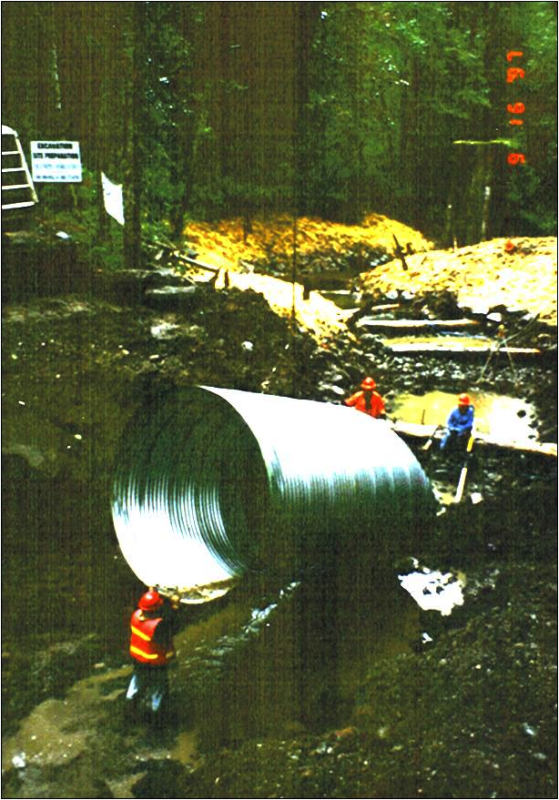
The new culvert and log weirs being placed.
A bit downstream of that culvert was another perched culvert that was a partial barrier during certain flows, and a full barrier at other flows, and was so undersized that high water would often flood the road. The new box culvert provides free access to fish during all flows.
The project was funded by the National Fish and Wildlife Foundation, King County Department of Natural Resources, and Stewardship Partners.
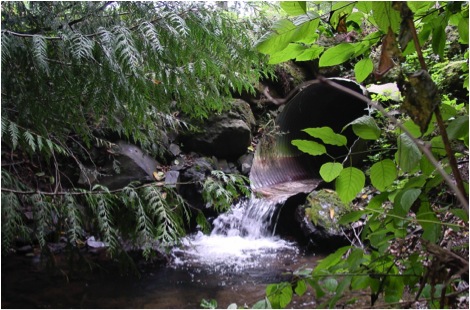
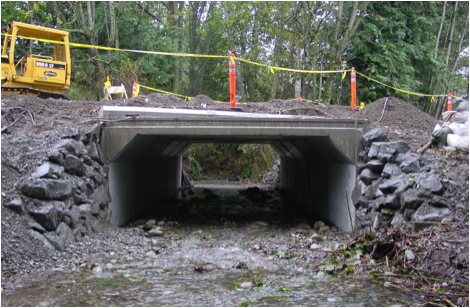
Mahler Park
Mid Sound did several projects in Mahler Park and several adjacent properties over the years. These included fencing, invasive species removal, planting native trees and shrubs, and construction of a side channel.
The side channel was designed to address one of the highest priority challenges for coho and steelhead in the basin – the lack of refuge for fish. In the summer, cold groundwater in the channel provides a cool refuge from the warmer mainstem. And in the winter, the slower water in the channel provides refuge from the fast and high mainstem flows.
In addition, 46 pieces of Large Woody Debris were placed into the side channel. This provides cover for fish, and habitat for the bugs that fish like to eat.
This project provided an excellent opportunity for Community Stewardship – with students from Green River College and various Eagle Scout groups getting involved to remove blackberry and plant trees and shrubs.
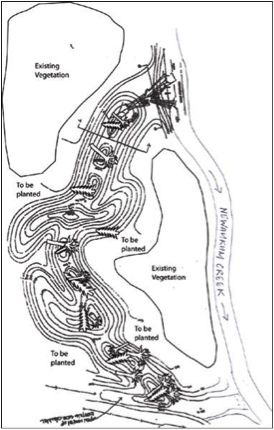
This design shows the new side channel and large wood, which provides refuge and habitat for juvenile fish.
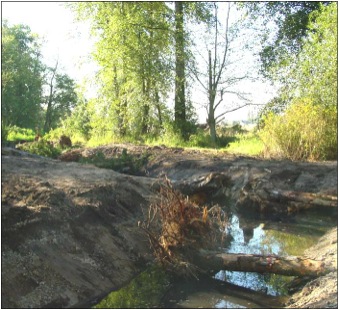
The photo shows the upper end of the side channel during construction, before water was allowed in (the water there is groundwater).
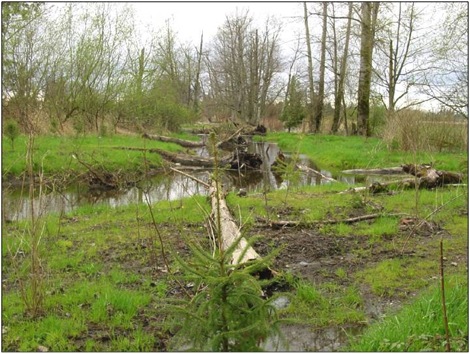
Above is the side channel (looking downstream) just after construction. You can see a few newly planted conifers.

Volunteers got into the action – removing invasive species, and having fun – in an area adjacent to the side channel.